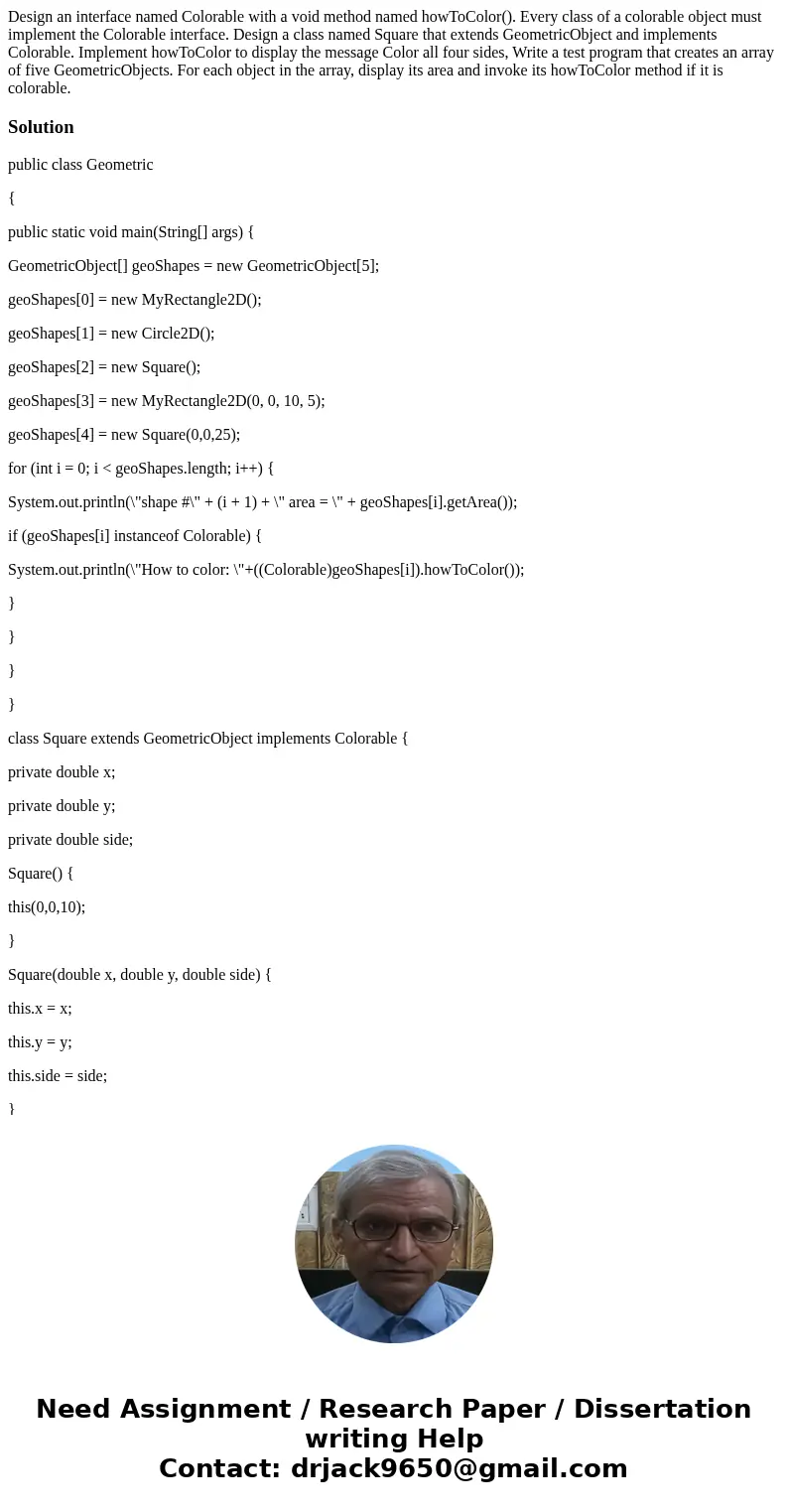Design an interface named Colorable with a void method named
Design an interface named Colorable with a void method named howToColor(). Every class of a colorable object must implement the Colorable interface. Design a class named Square that extends GeometricObject and implements Colorable. Implement howToColor to display the message Color all four sides, Write a test program that creates an array of five GeometricObjects. For each object in the array, display its area and invoke its howToColor method if it is colorable.
Solution
public class Geometric
{
public static void main(String[] args) {
GeometricObject[] geoShapes = new GeometricObject[5];
geoShapes[0] = new MyRectangle2D();
geoShapes[1] = new Circle2D();
geoShapes[2] = new Square();
geoShapes[3] = new MyRectangle2D(0, 0, 10, 5);
geoShapes[4] = new Square(0,0,25);
for (int i = 0; i < geoShapes.length; i++) {
System.out.println(\"shape #\" + (i + 1) + \" area = \" + geoShapes[i].getArea());
if (geoShapes[i] instanceof Colorable) {
System.out.println(\"How to color: \"+((Colorable)geoShapes[i]).howToColor());
}
}
}
}
class Square extends GeometricObject implements Colorable {
private double x;
private double y;
private double side;
Square() {
this(0,0,10);
}
Square(double x, double y, double side) {
this.x = x;
this.y = y;
this.side = side;
}
@Override
public double getArea() {
return side * side;
}
@Override
public double getPerimeter() {
return side * 4;
}
@Override
public String howToColor() {
return \"Color all four sides.\";
}
public double getX() {
return x;
}
public void setX(double x) {
this.x = x;
}
public double getY() {
return y;
}
public void setY(double y) {
this.y = y;
}
public double getSide() {
return side;
}
public void setSide(double side) {
this.side = side;
}
}
interface Colorable {
String howToColor();
}



 Homework Sourse
Homework Sourse